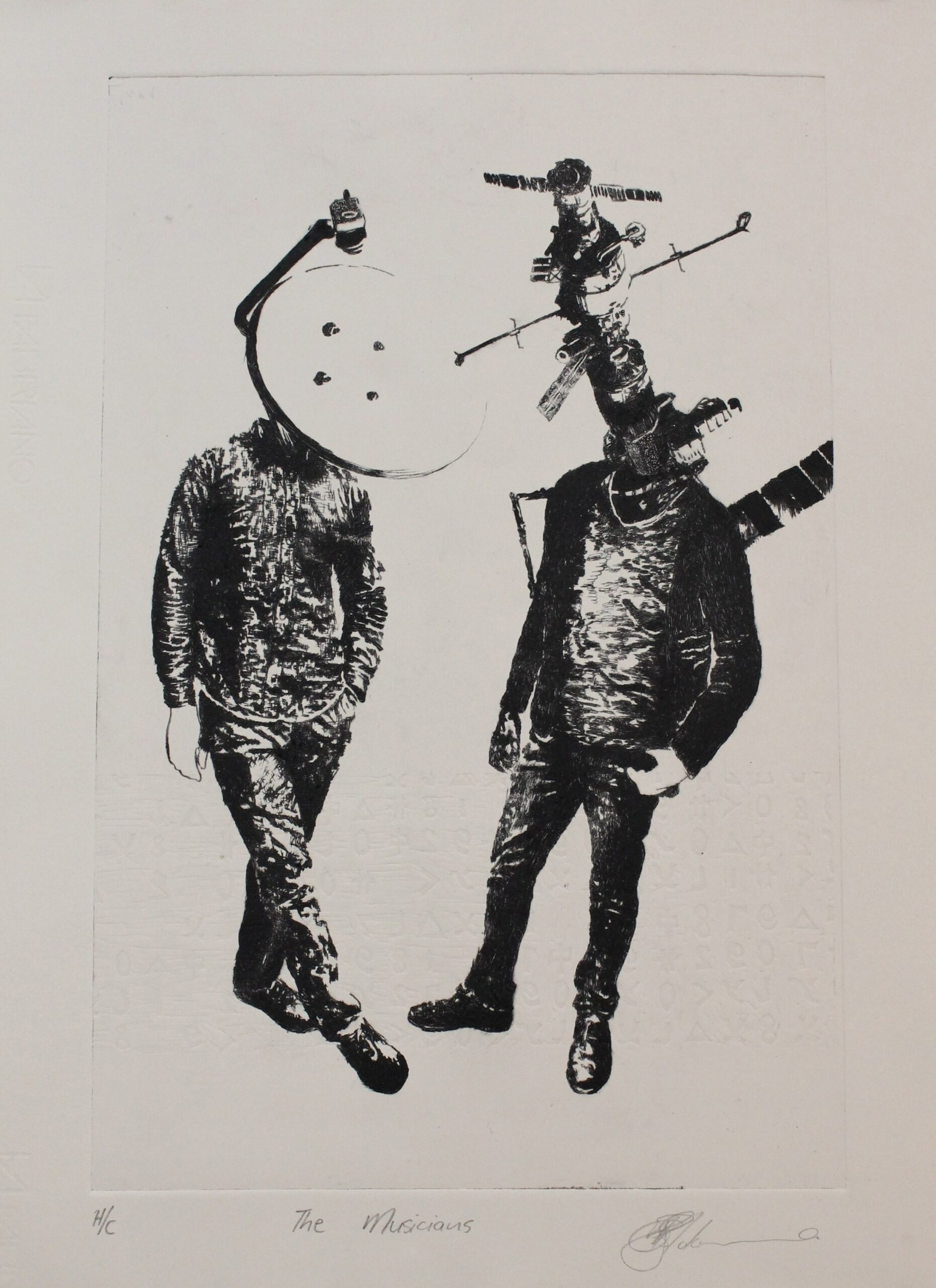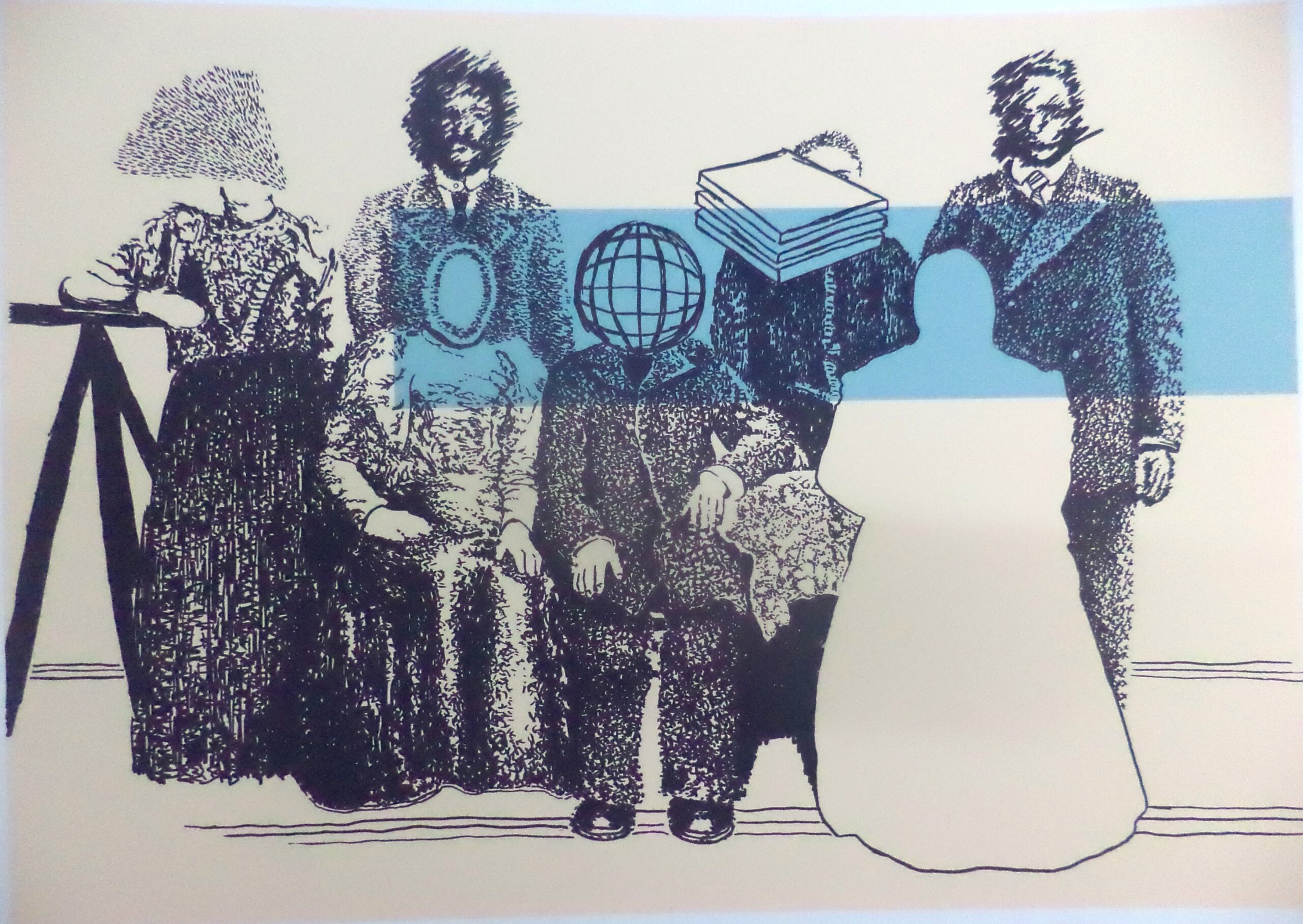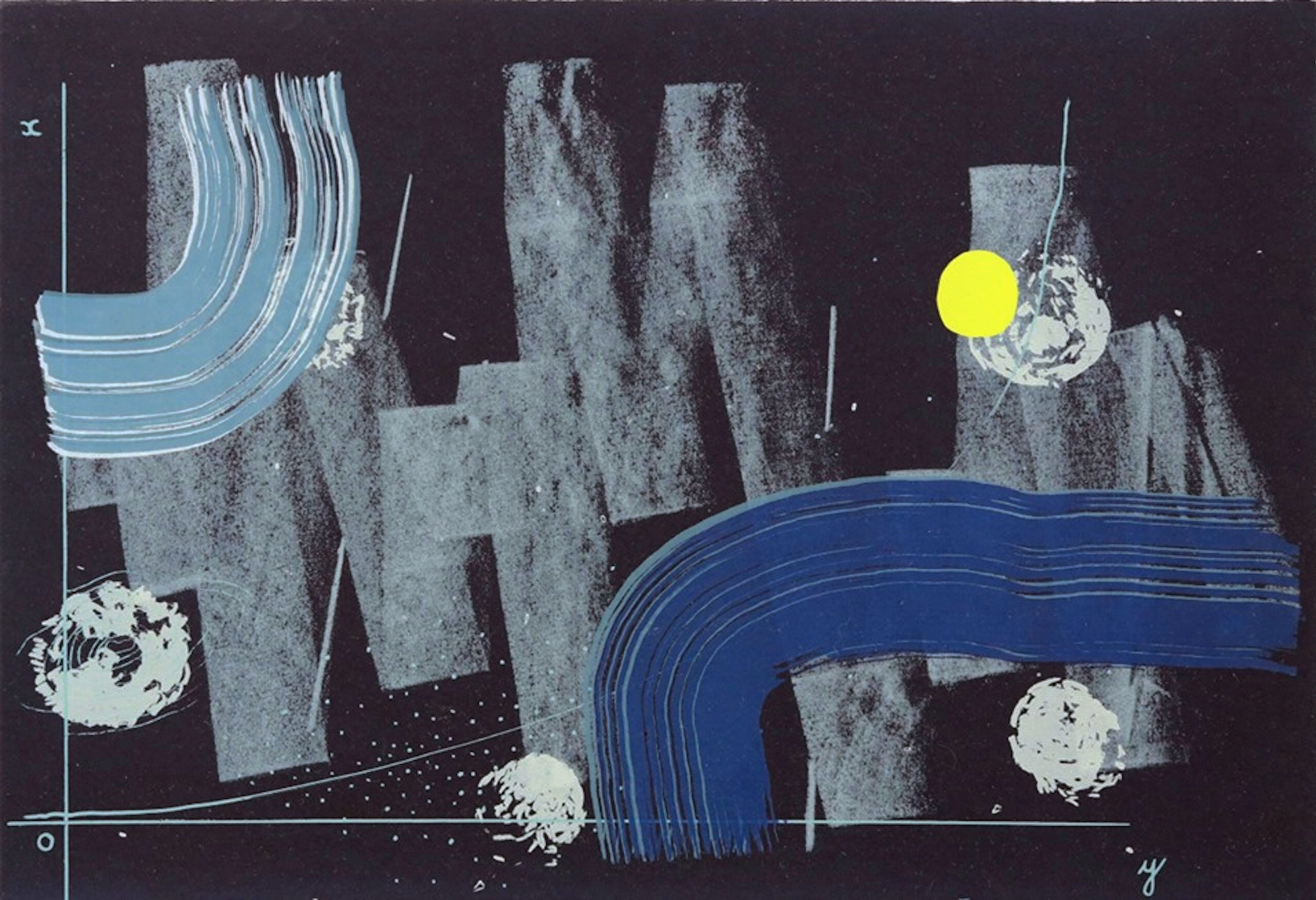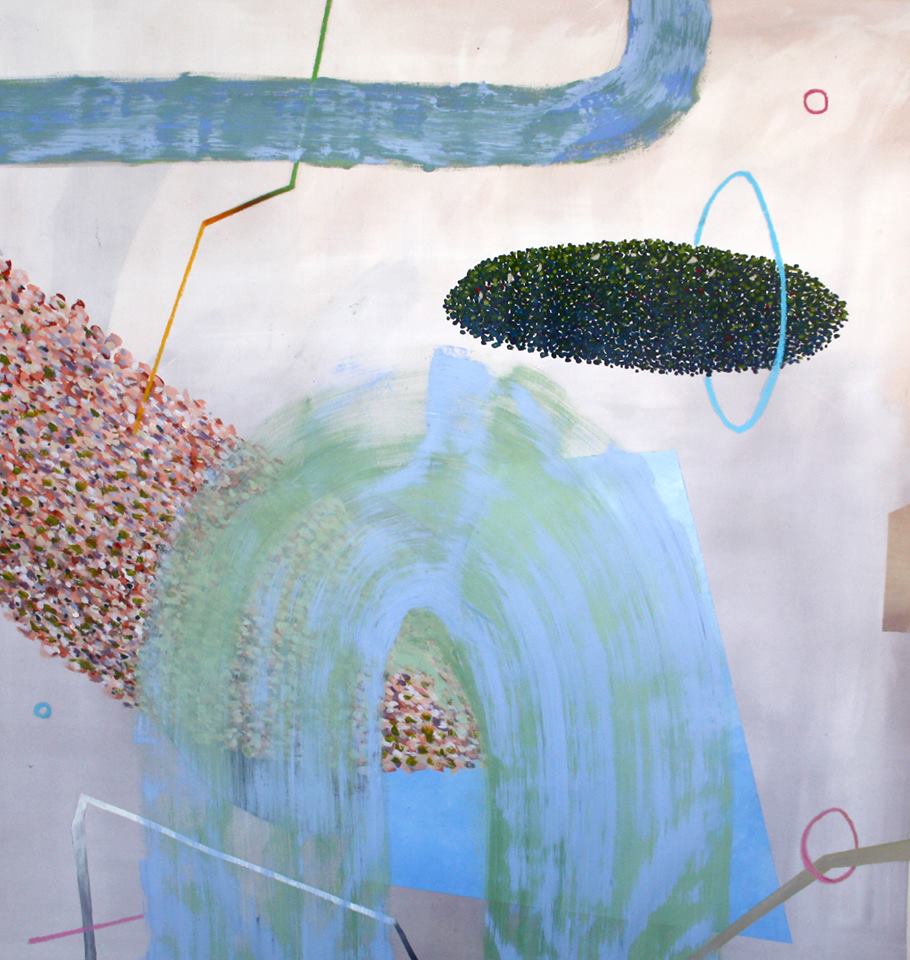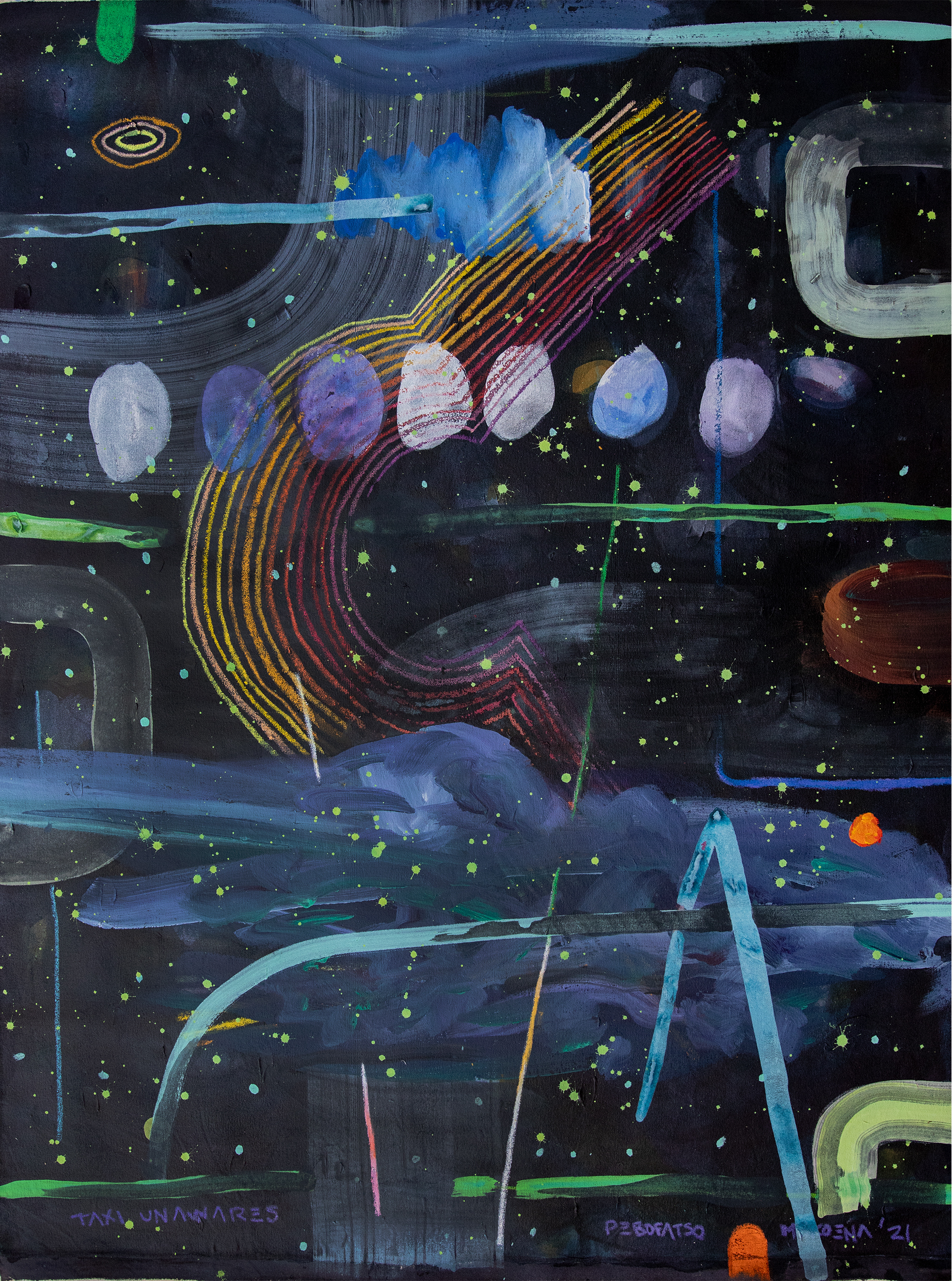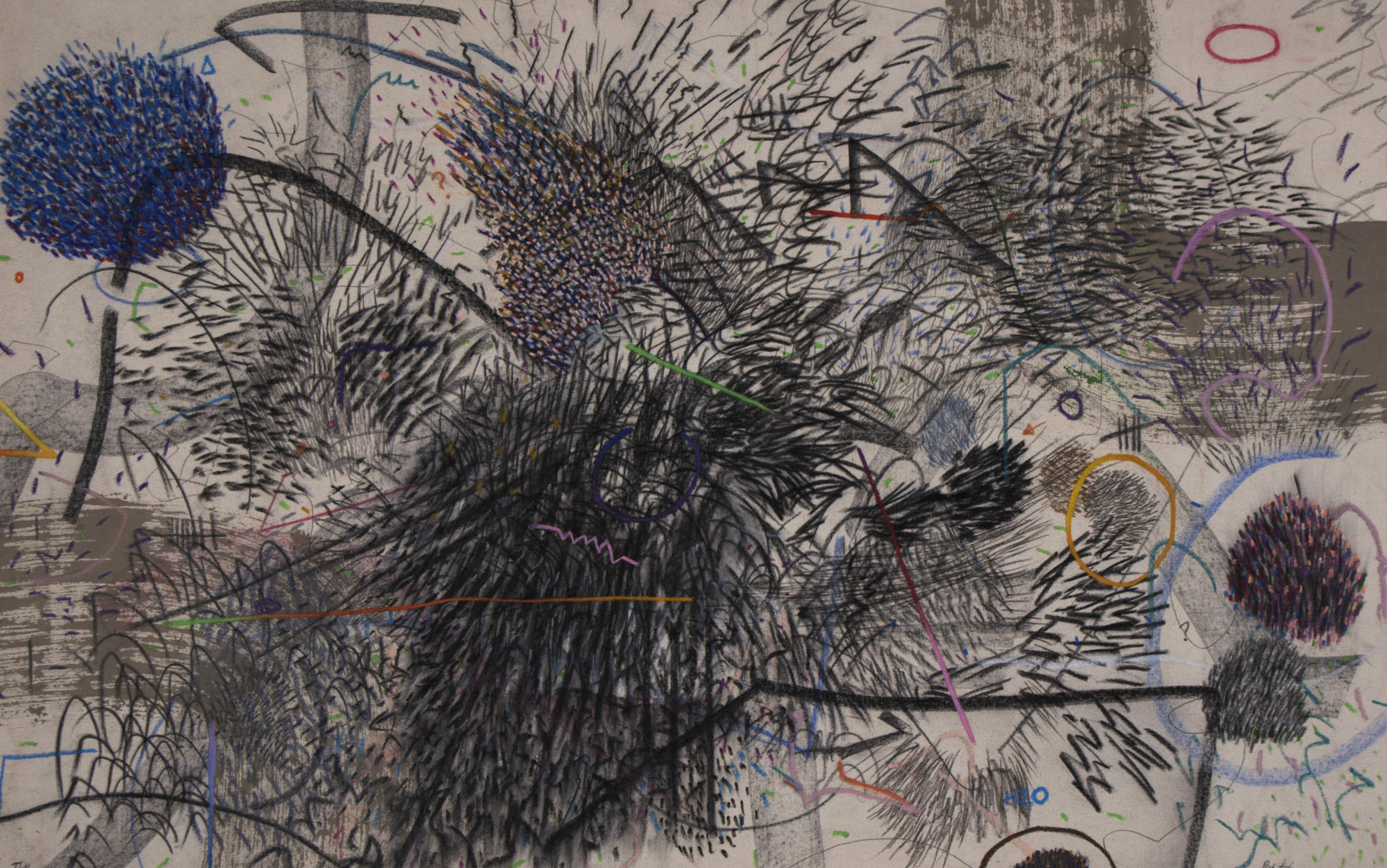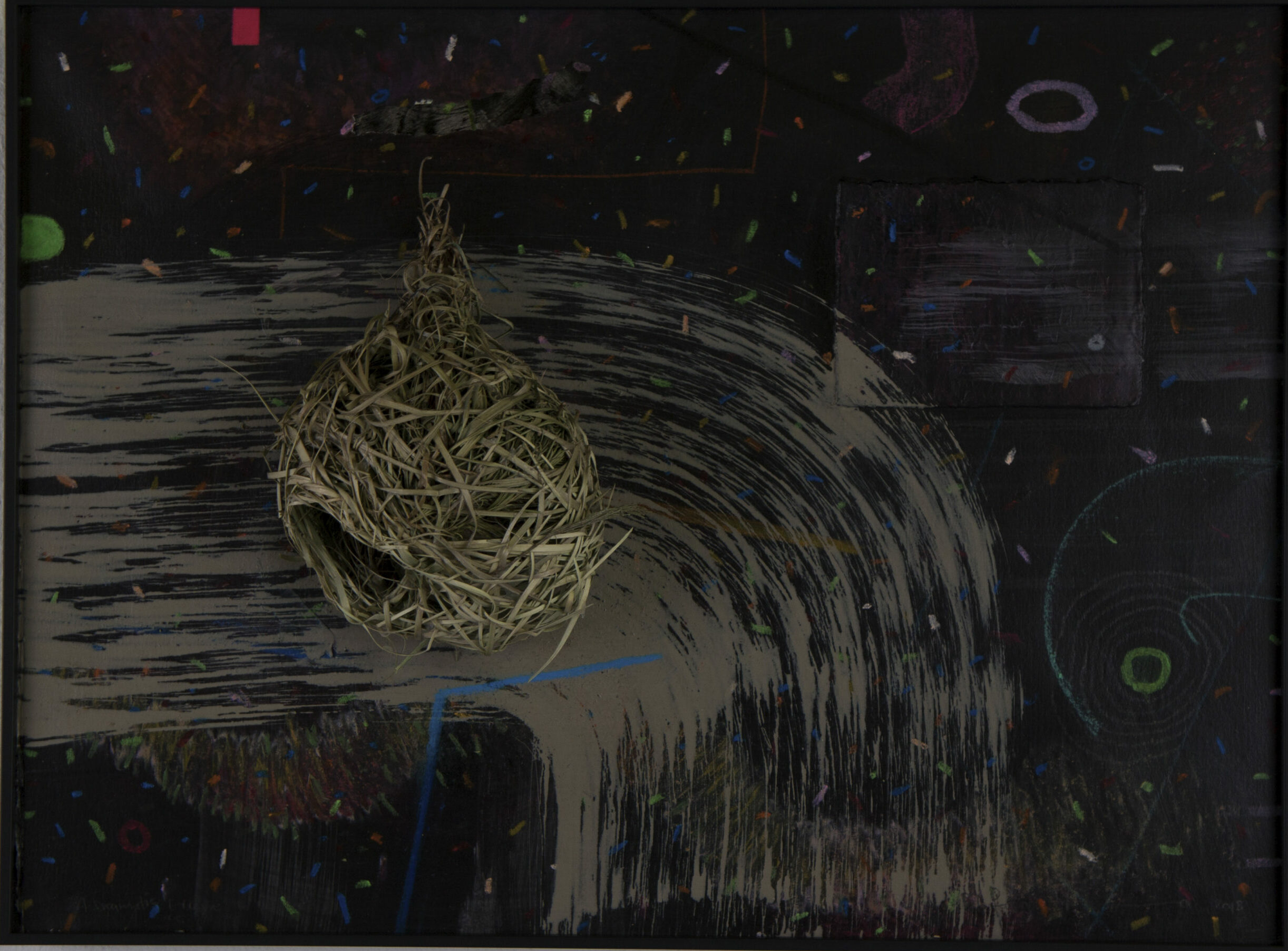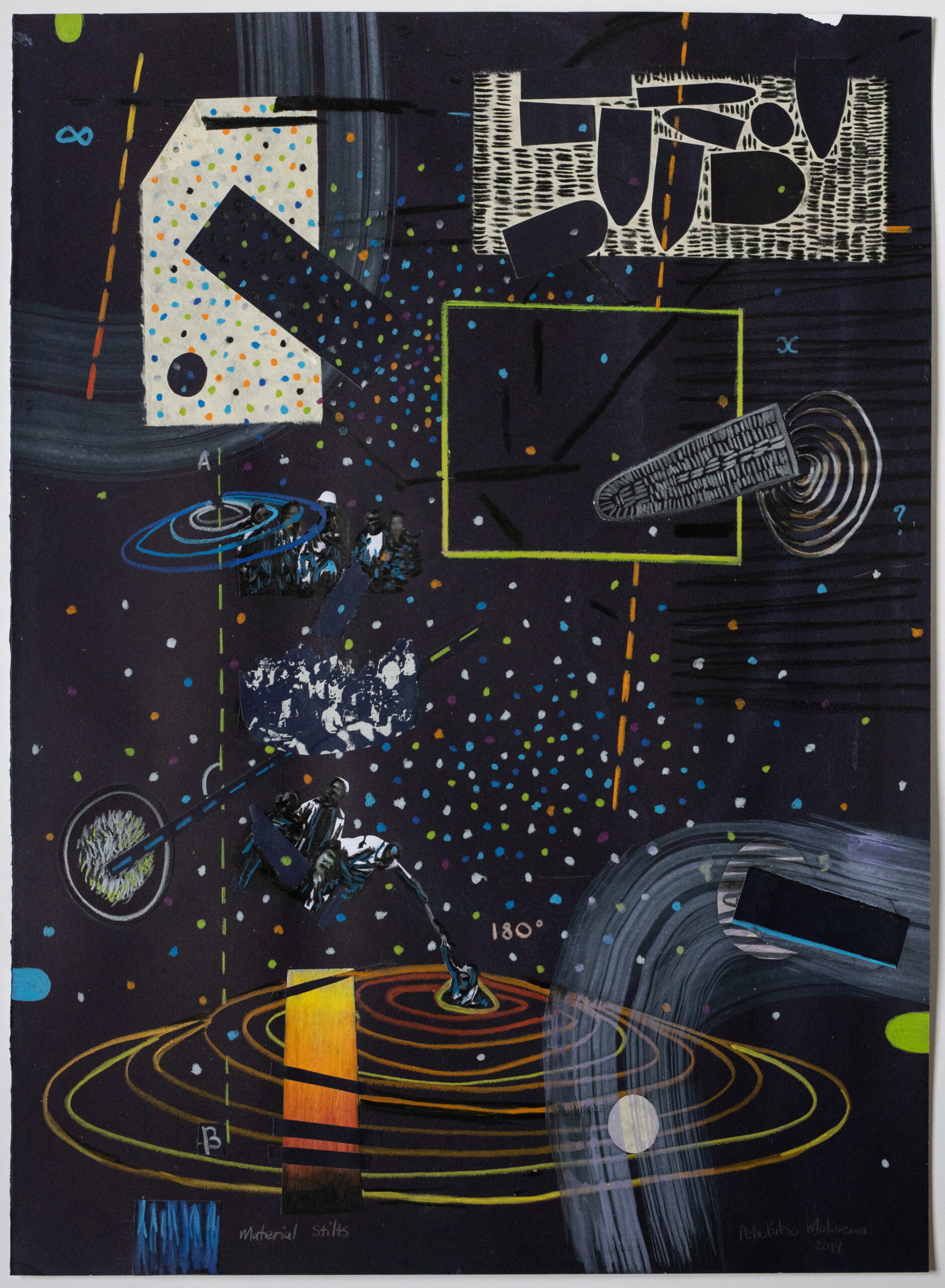‘Spacial Moments’: A Retrospective by Pebofatso Mokoena | South Africa
We are pleased to present a retrospective exhibition by South African artist Pebofatso Mokoena, born in Ekurhuleni and currently living in Johannesburg. Mokoena has been active in the EAS network since 2016 when he uploaded his portfolio and we published an article on “The Beasts of No Nation” exhibit at the Assemblage Studios in Johannesburg that he co-created with Fleur de Bondt and Grace Mmabatho Mokalapa. Working together, they created a show that was the result of exchanges, conversations, group drawings, and active collaborations, exploring the artists' experimental work. The EAS team was immediately inspired by his thoughtful art practice and kept in touch. In 2017 EAS correspondent Uji Venkat did an interview with him and in 2018 EAS team members visited his impressive solo show “Inside Job” at the Bag Factory in Johannesburg. Catching up with him this year, we are pleased to present a retrospective of his evolving work and art practice.
Spacial Moments
Curatorial Statement
Pebofatso Mokoena describes the evolution of his work as situated in personal growth, “from child to adult to elder”, and articulates a fluid and responsive approach attentive to “new sets of information, interests, happenings, deaths and life’s revelations that take up awareness”. He believes that “one ‘aesthetic’ doesn't (and can't) articulate the complexity of one’s lived experience.” Responding to shifting sands, horizons, and outside pressures to create one recognizable style and aesthetic, he gives himself permission to be expansive and true to what he wants to express. As he puts it, his visual practice unfolds “in the ways I want my life to be, beyond being just an artist.”
Mokoena’s generative paintings, prints, drawings, and paper constructions, alive with figurative, symbolic, and abstract shapes, transport the viewer in time and space. In interconnected and divergent language flows, his works inhabit immersive topographies, politically-charged spaces, and cultural and cosmic realms that appear to emanate from terrains of music, art, history, geography, astronomy, architecture, mathematics and biology, to name a few. His thought-provoking artworks transport the imagination and suggest tributaries of enigmatic meaning, poetically referenced by their titles.
Operating at micro and macro scales, Mokoena’s creative gestures call to mind planning and mapping systems, as well as trans-disciplinary conceptual and organic configurations, ranging from intimate family portrait formulations to swarms of marks and migratory flows of population, information, data, etc. His constellations and dense accumulations of imagery suggest patterns of organization and perception. For me, his works come alive at animated intersections of the familiar and the abstract, opening pathways that call out for new ways of seeing and understanding.
Ann Wettrich | EAS team
Click the text at the lower right of each exhibition ‘drawer' to see the gallery of images.
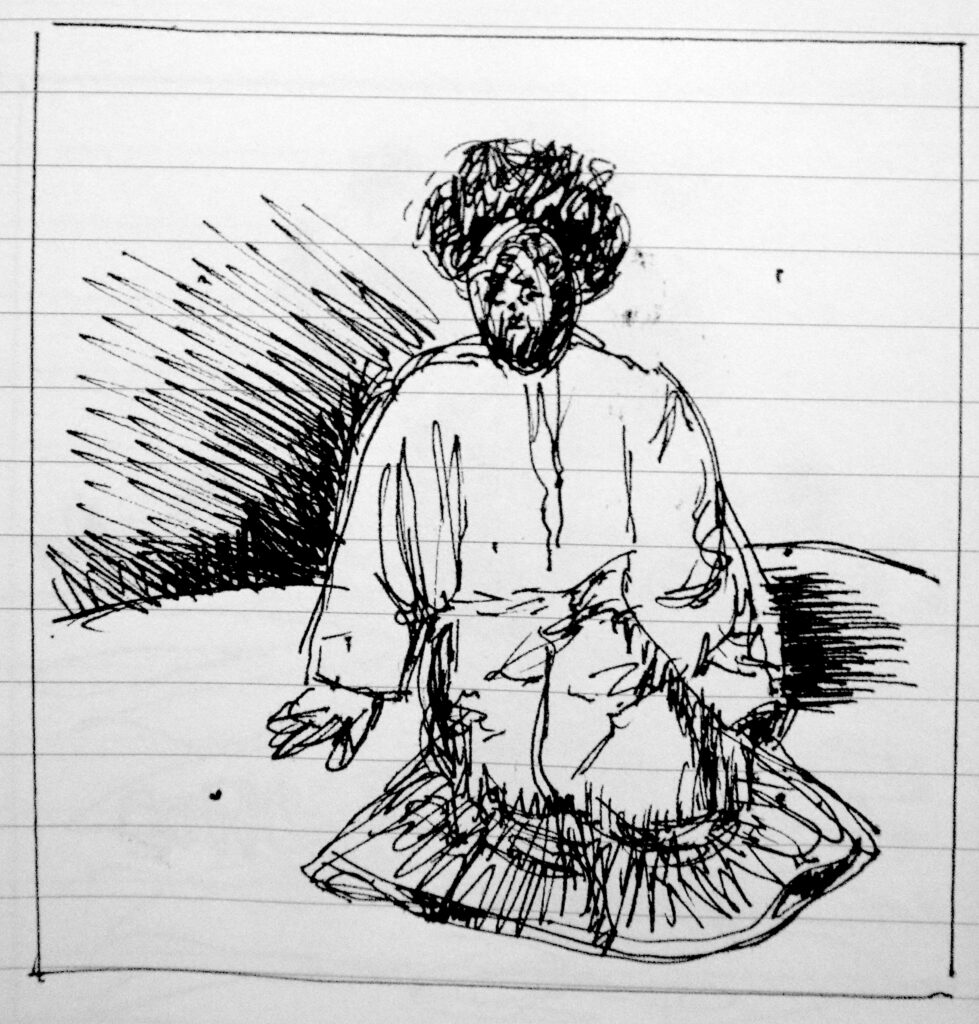
Printmaking
Being incredibly aware of the tools in the printmaking studio, such as a printing press, paper, etching tools, ink, rollers and the like, this family of tools became both tools, process and method for constructing and articulating a part of my visual art language. The image of the family portrait thus became an important visual metaphor on speaking about intimacy with other people, particularly at a local level. The meaning of mark-making took on a more abstract meaning when taken out of the context of the family portrait. When a mark began to stand alone, and crucially stand as a series of marks, I was in a place where the image of a swarm of marks, of information, of data began to speak of larger more digitised process of accounting for the flow of people, and critiquing the very environment that makes these accounting processes possible.
Print Drawers
From print to print
writer to type
letter to silence
and back again
how has it come to be
that the chasms made by wretched ego
that hand-picked ground plasma
created an even larger crater
that feels as large as the universe
to leave and not return
that cut deep
but the wound of your feedback loop
foreclosed, locknut
embryos without sun
seedlings to wind
to make music from absence
the print drawers howl
like wolves at full moon
at the gaps left behind
we connect on DSTV
satellite dish on walls of NE 51/9
astronaut babies
no sight?
back to print
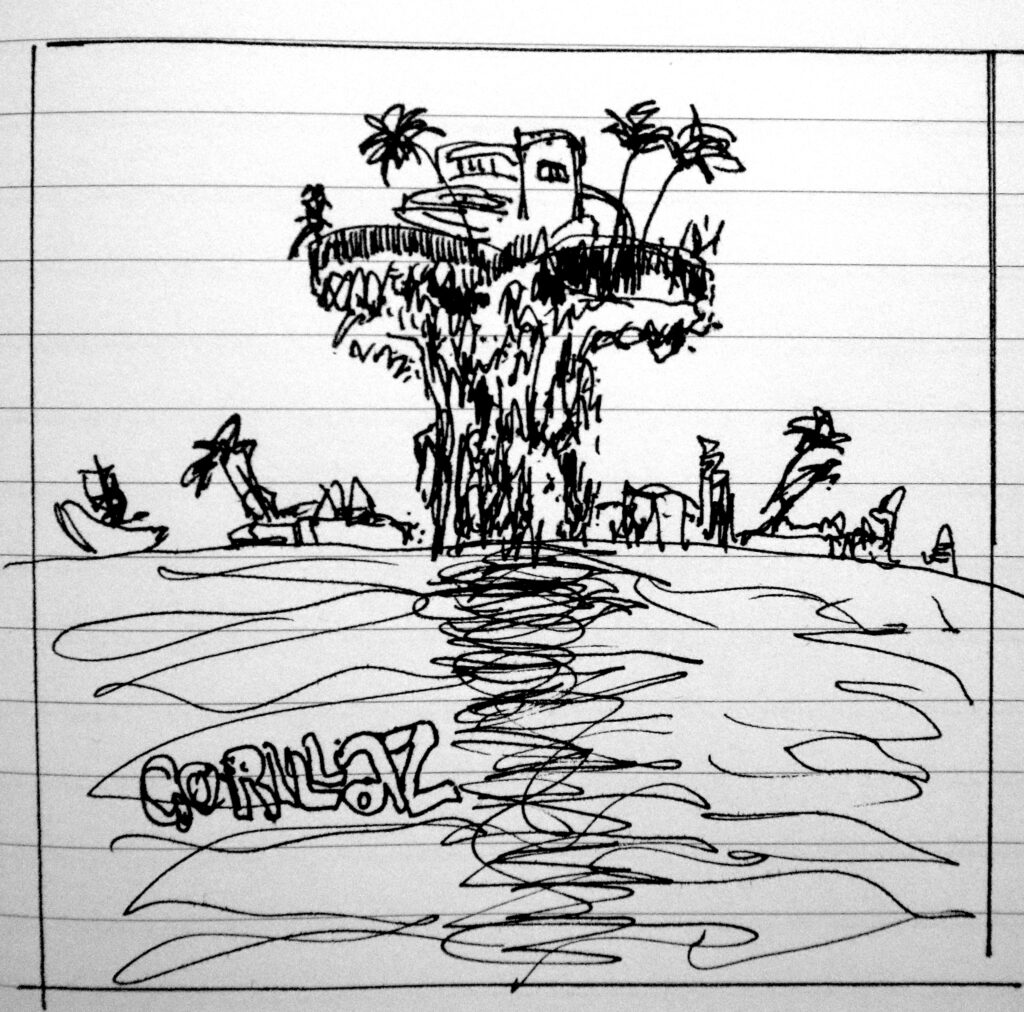
Painting
Having found conceptual and technical relations in both drawing and printmaking to painting, my work stands as a practice in articulating the sensitivities of space in the language of painting. By revisiting the art-historical artistic moments such as impressionism, abstract-expressionism, minimalism. Being witness to the local happenings around me. The visualisations of these happenings have evolved from the macrospace of art history to the microplace of happenings on an individual level.
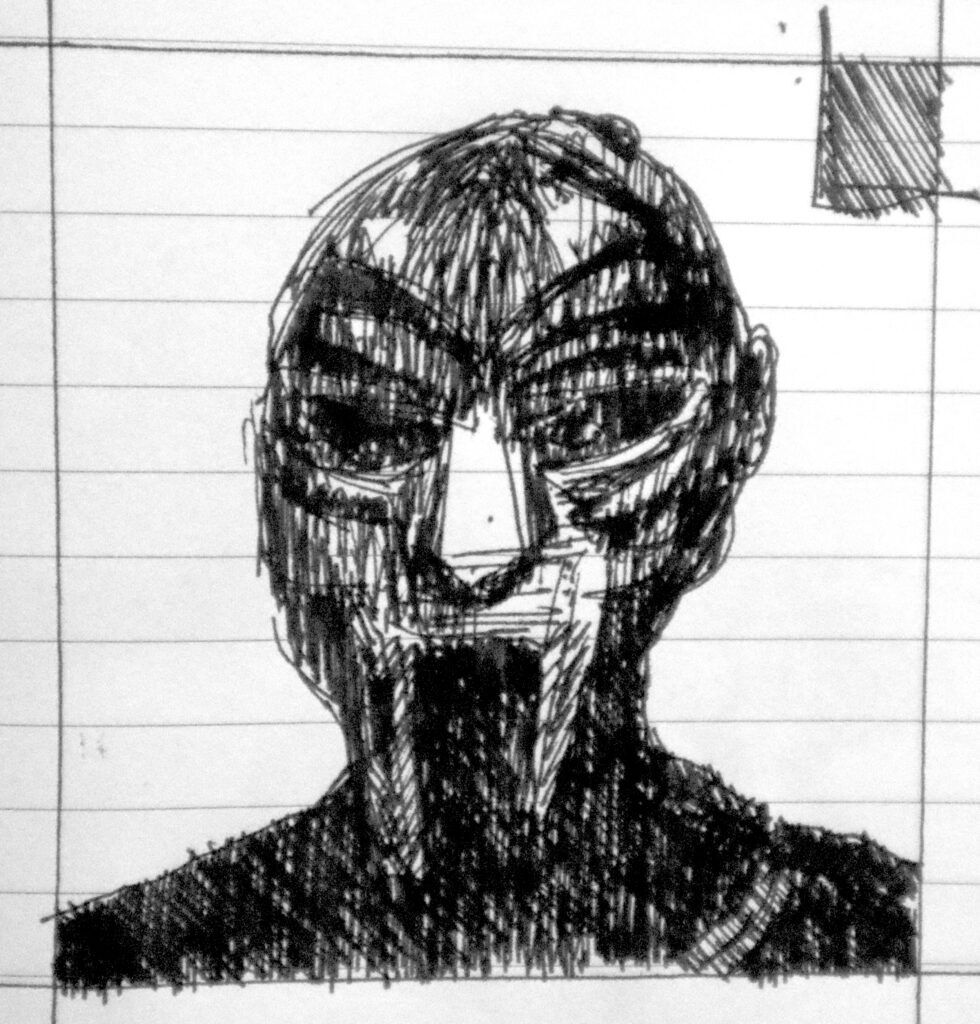
Drawing
Drawing has a far-reaching and storied history as one of the most fundamental human processes of visualising, articulating information, providing maps of tele-visioning and world-building moments on paper, which in turn are made manifest in large architectural, design, tech, botany and a range of disciplines in the world. It is also the primary point of reference for my painting and printmaking practice alike. This particular body of work has shows a trajectory which has moved from a very literal visualisation of the physical being situated in the physical world, to articulate abstract gestures found in the process of mark making from the artist’s hand.
Paper Constructions
My practice took a postmodern turn when it came to my paper constructionist works - text, writing, inter- and meta-textuality took centre stage. 2020 was the year in which I started The Kathorus Documents1, and as I was navigating my way through a 1996 report detailing the abhorrent events in the East Rand prior to the nation’s first democratic elections. Images were constantly conjured up in my brain, and I had trouble figuring out a way to speak back towards these violent images - perhaps providing a counter-image parallel to these images. Can text function as a counter-image? How does the relationship between text and image function in my practice? What makes the confluence between image and text exist? I was never really sure, from an artistic trajectory as to what comes first, the image or the text? My hypothesis was to treat both text and image as both text and image.
Footnote:
1The Kathorus Documents is a Historical Library that functions as a parallel archive machine, mapping out its history and its future trajectory through sonic, archival, diagrammatic and historio-graphical lenses.
About the Artist
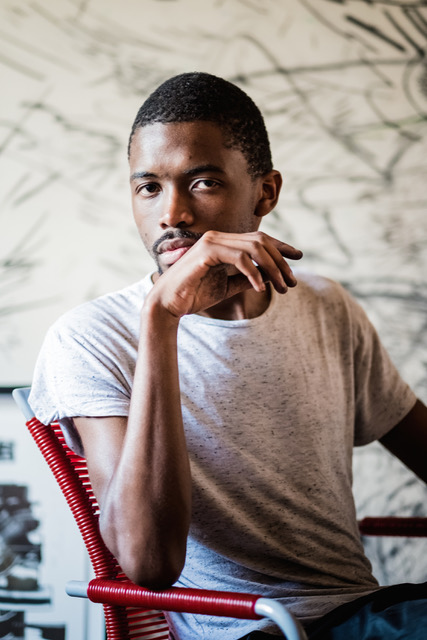
PEBOFATSO MOKOENA
Currently living and working in Johannesburg, Pebofatso Mokoena was born in Ekurhuleni in August 1993, 8 months before South Africa’s first democratic elections. He completed his high school education at Bracken High School in 2011, acquiring both a distinction in Visual Art and the Design School Art Trophy. In 2014 he completed his NDip (Visual Art) at the University of Johannesburg, thereafter earning his BA (Visual Art) at Wits University with distinction, granting him a Postgraduate Merit Award. The artist is currently pursuing his MAFA at Wits University.
Mokoena’s practice, emerging from backgrounds in drawing, painting and printmaking, is formally underscored by precise mark making and division of space, aims to create sociograms that explore ideas around politics, family life and the environment.
